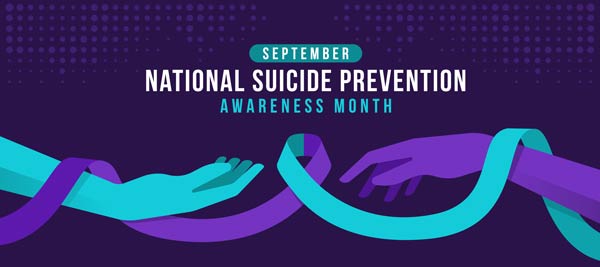
 |
|
||||||||||
 |
 |
 |
 |
|||
September Is National Suicide Prevention Month |
 |
September Is National Suicide Prevention Month |
Did you know more than 700,000 people around the world take their own lives each year? In 2021, in the United States alone, that number was 48,183, up 36 percent from 2020. An additional 12.3 million American adults seriously thought about suicide, 3.5 million planned a suicide and 1.7 million attempted suicide, according to NAMI — the National Alliance on Mental Illness. The Centers for Disease Control and Prevention (CDC) reported that in 2021 in Illinois, the number of suicides was 1,454, up 8 percent from 2020. Workplace Solutions (our Employee Assistance Provider) hosted an online seminar on World Suicide Prevention Day (Sept. 10) to raise awareness about the growing trend in suicide throughout the world. Breaking the Silence: Promoting Open Conversations on Suicide Prevention is now available to watch on-demand on Workplace Solutions website. (Access code: PDRMA) World Suicide Prevention Day — and NAMI’s celebration of September as Suicide Prevention Month — raises awareness that suicidal thoughts can affect anyone regardless of age, gender or background and are often the result of an untreated mental health condition. Learning to recognize the warning signs means you may be able to help someone struggling with suicidal thoughts.
Although there are many warning signs, these three are the most significant:
Other common signs include:
Recognizing signs in children and teens is critical, because suicide is the second leading cause of death in children ages 10–14 and teenagers and young adults ages 15–19 in the United States, according to the CDC. According to Psychcentral.com, if you can recognize the early signs of suicidal thoughts in children and teens, you’ll be able to get them the help they need sooner. “Seeing someone in crisis can be frightening for a parent, caregiver, teacher, or friend,” Psychcentral says. “It can feel hard and scary if you’re the one experiencing it, too.” Suicidal behavior is a psychiatric emergency — you’ll need to take immediate action if you identify someone in danger. Since a 10-digit number isn’t always easy to remember, the U.S. Federal Communications Commission created the 988 number in 2022 to serve as our national number for suicide prevention and mental health crises. If you’d like to learn more about recognizing suicidal thoughts in children and adults and how you can help prevent suicide, click on the resources below: |
